There are many types of materials along with multiple processes flows in the factory. Similar phenomena often occur in the intralogistics process, such as untimely arrival of materials, wrong transfer of materials, and wrong matching of pallets and parts, leading to rising costs on time in the entire process. Meanwhile, some procedures may seem 'leisure', and some seem extremely busy. At this point, it is essential to optimize the intralogistics process of the factory, making the connection between different processes more coherent and coordinated, thus reducing the waiting time for materials.
Our client is a well-known enterprise in the equipment manufacturing industry. One of their workshops needs to adopt a high-flexibility intralogistics automation solution. Their workshop is mainly used for finished engine parts warehousing, including multiple interval transfers. There are more than four types of carriers on site for autonomous forklifts to pick up and transfer. The finished parts can be transferred end-to-end by configuring the top-level system and terminal equipment. The logistics process will be more coherent with the help of embedded systems. So, the logistics transfer efficiency gets vastly improved in the end.
Multiple Carriers
There are a wide variety of finished parts and components on the project site, corresponding to different types of vehicles. Autonomous forklifts must identify the carriers' size and adjust the fork adaptively to match different types of carriers.
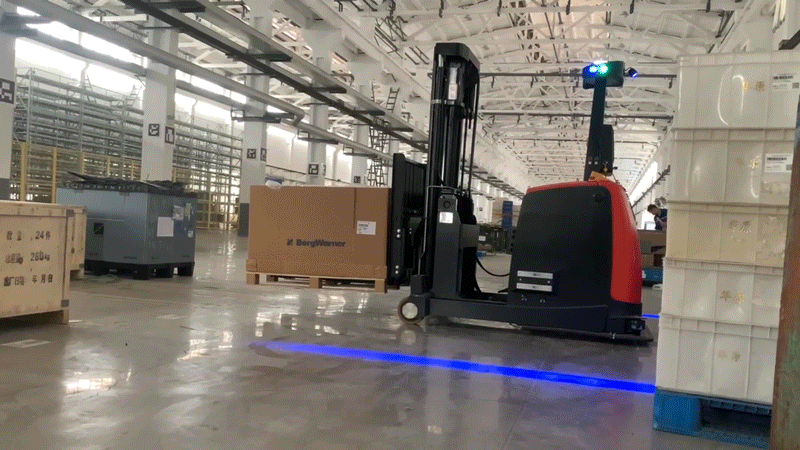
Carrier No. 1
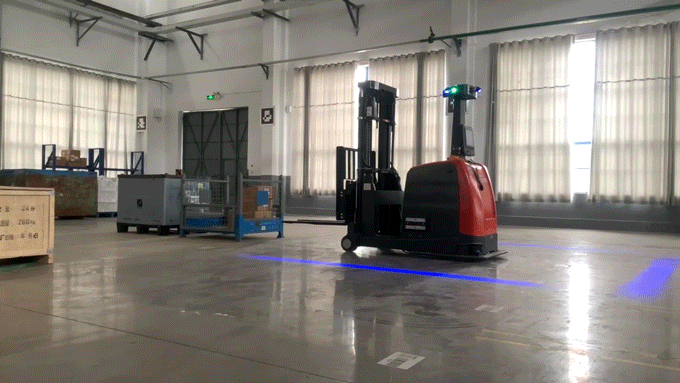
Carrier No. 2
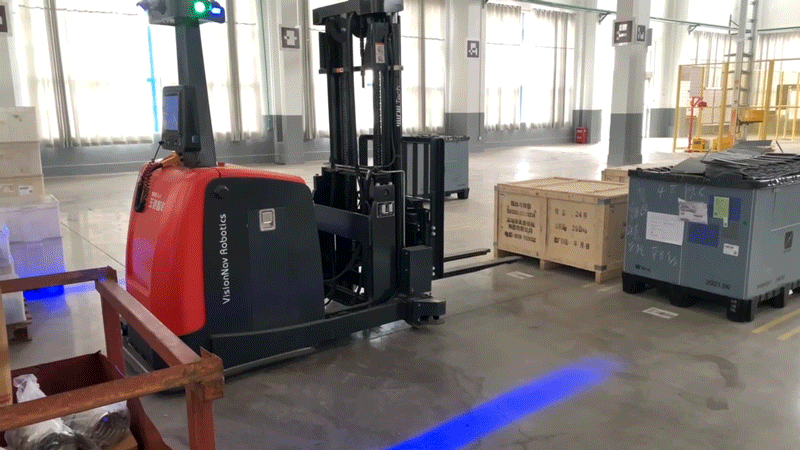
Carrier No. 3
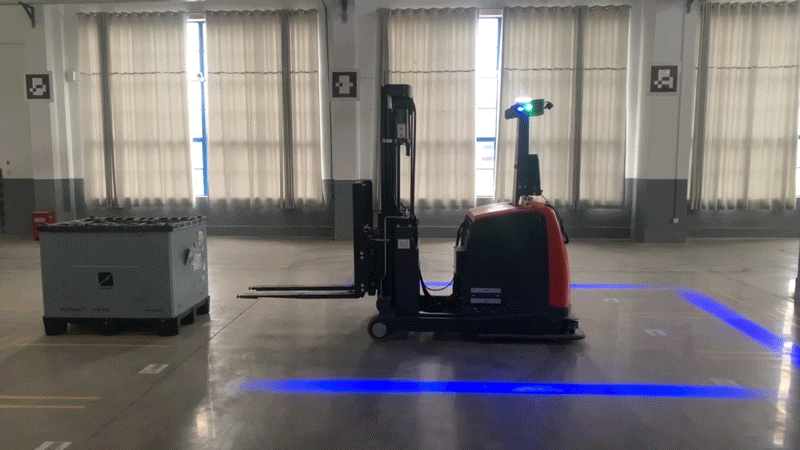
Carrier No. 4
Material Transfer Between Intervals
The project mainly covers the warehousing of finished parts(boxed) from the buffer area to the storage area, horizontal transfer between the storage area and the picking area, and the pallet recycling process in the picking area. During the transfer of materials into and out of the warehouse, the warehouse management system needs to simultaneously synchronize the storage location and pallet carrier information with the autonomous forklifts and respond to random needs promptly, thus ensuring free transfer of materials between intervals.
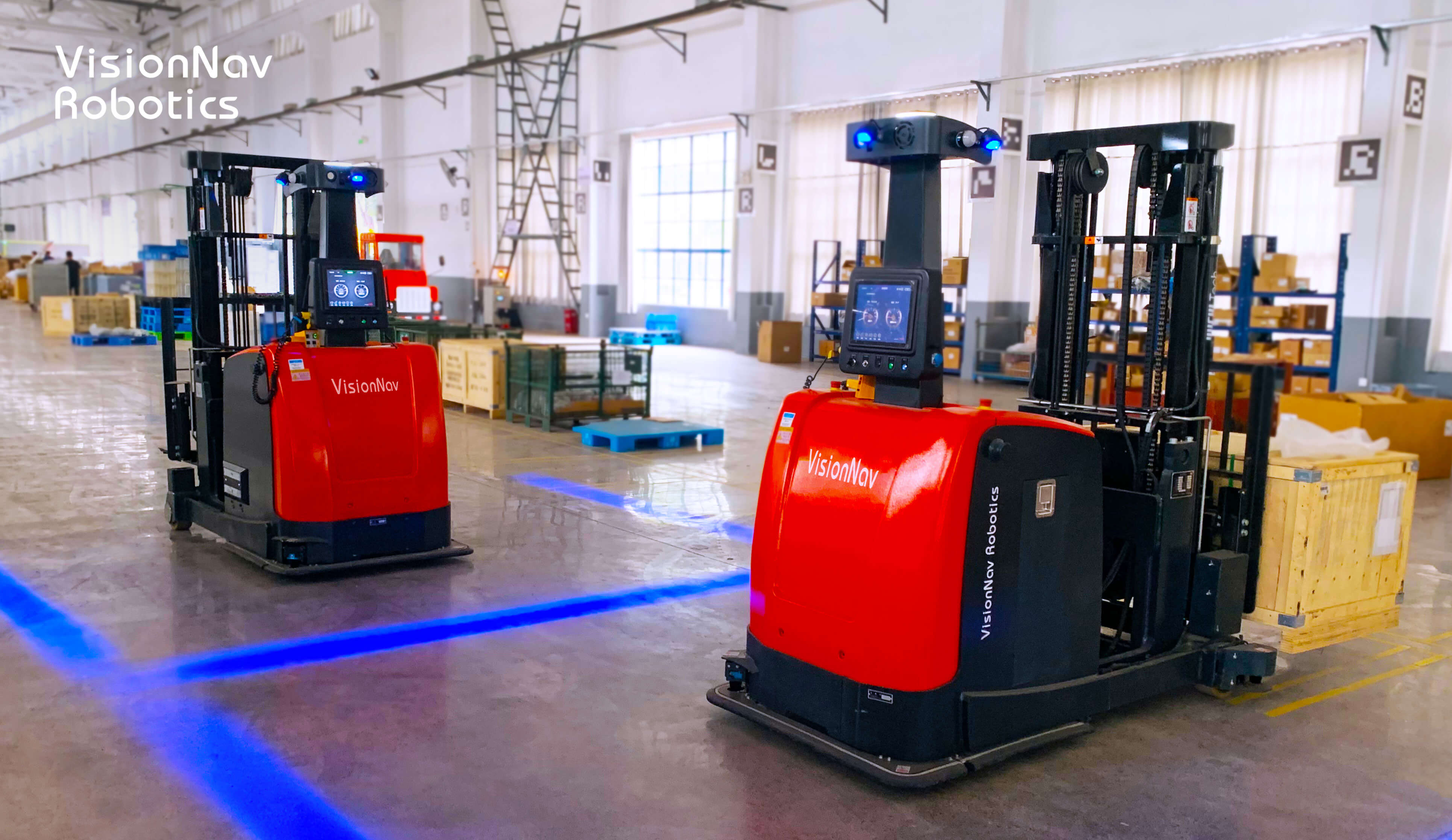
Horizontal Transfer of VNP20
Solution
By deploying two VNP20 counterbalance stacker autonomous forklifts as the terminal application equipment, together with the central control system which connects to the customer's WMS, we help our client realize the optimization of the workflow with "no waiting" and "no congestion" time when finished parts and components are transferred between intervals.
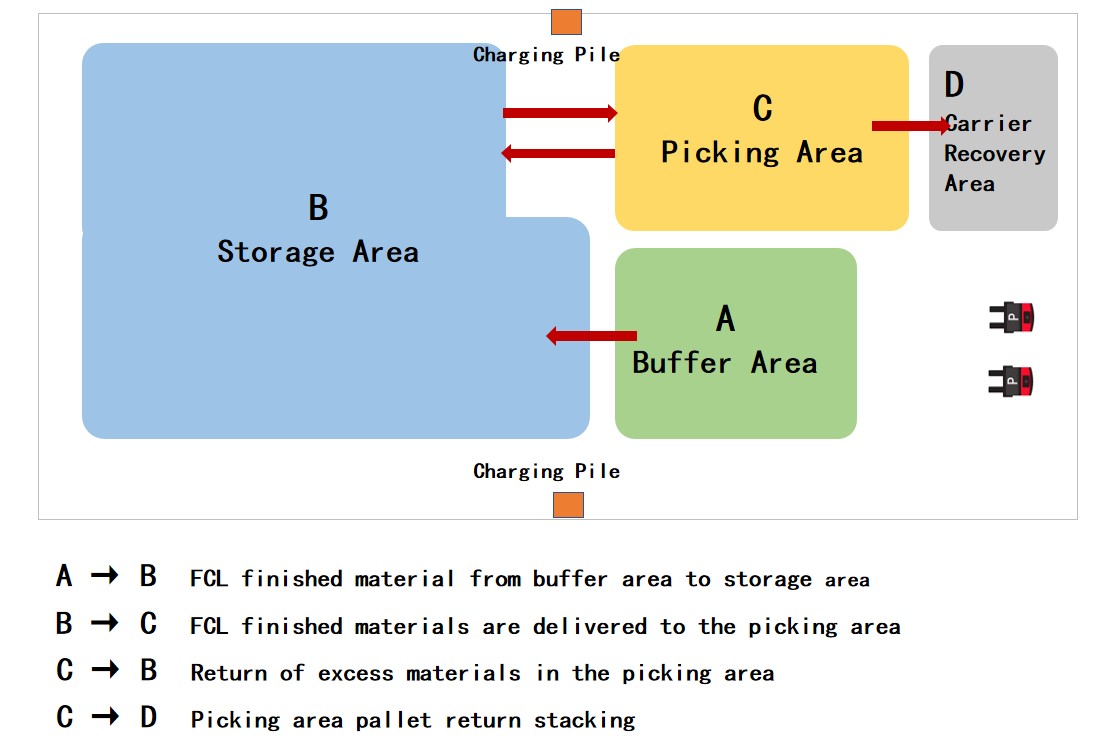
Flow Chart
Warehousing Process: The central control system of VisionNav is connected to the customer's WMS system. When the finished parts enter the buffer area, the staff scans the pallet material code, binds the warehouse location code, and then sends the task to VNP20 through the central control system. VNP20 receives the message, conducts material storage operations, and forks the goods to designated storage locations, thus completing the storage process.
Horizontal Transfer: The client's WMS sends the information list of finished parts and components in the picking area, including storage location information, picking quantity, and other information, to the central control dispatching system. Then the staff selects the task of the picking list to the central control dispatching system, which later automatically digests the task and sends the parts information to the VNP20.
The whole box of finished parts is transferred from the storage area to the picking area by the VNP20 autonomous forklift. The unpacking and picking process will be completed manually. The excess materials are transported back to the storage area by the autonomous forklift to complete the material transfer between the storage area and the picking area.
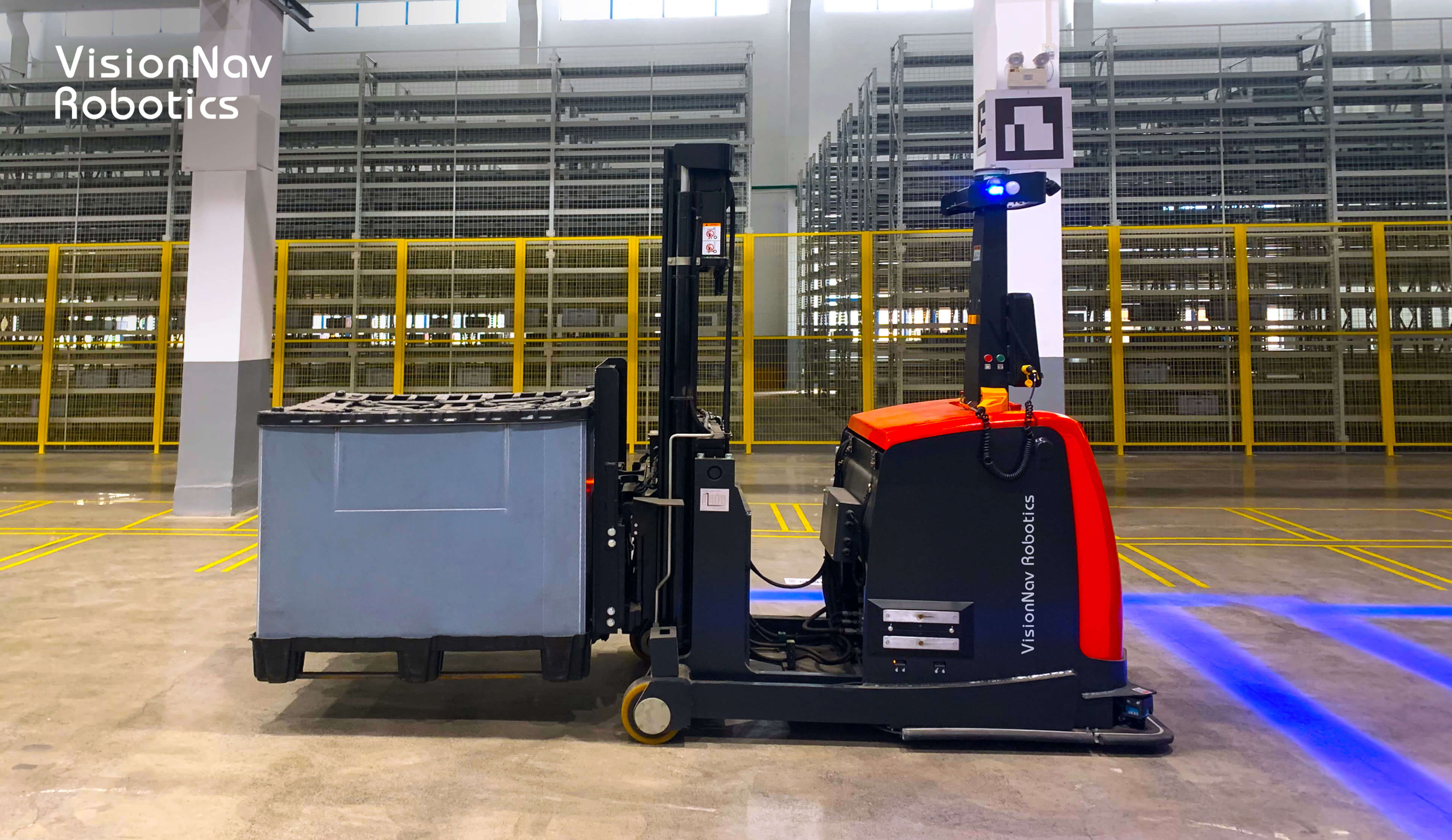
VNP20 is handling boxed materials
Logistics Better.
Reduce Operation and Maintenance Costs by 1-3 Times: Without changing the carrier configuration and installation of the warehouse, VNP20 helps realize the automatic transfer of materials between the buffer area-storage area-picking area, saving 1-3 times the labor cost. To adopt different types of carriers, VNP20's adaptive sensing laser can accurately identify different types of carriers, then adjust the fork pitch and the body posture according to the pallet posture, and accurately fork materials with high precision.
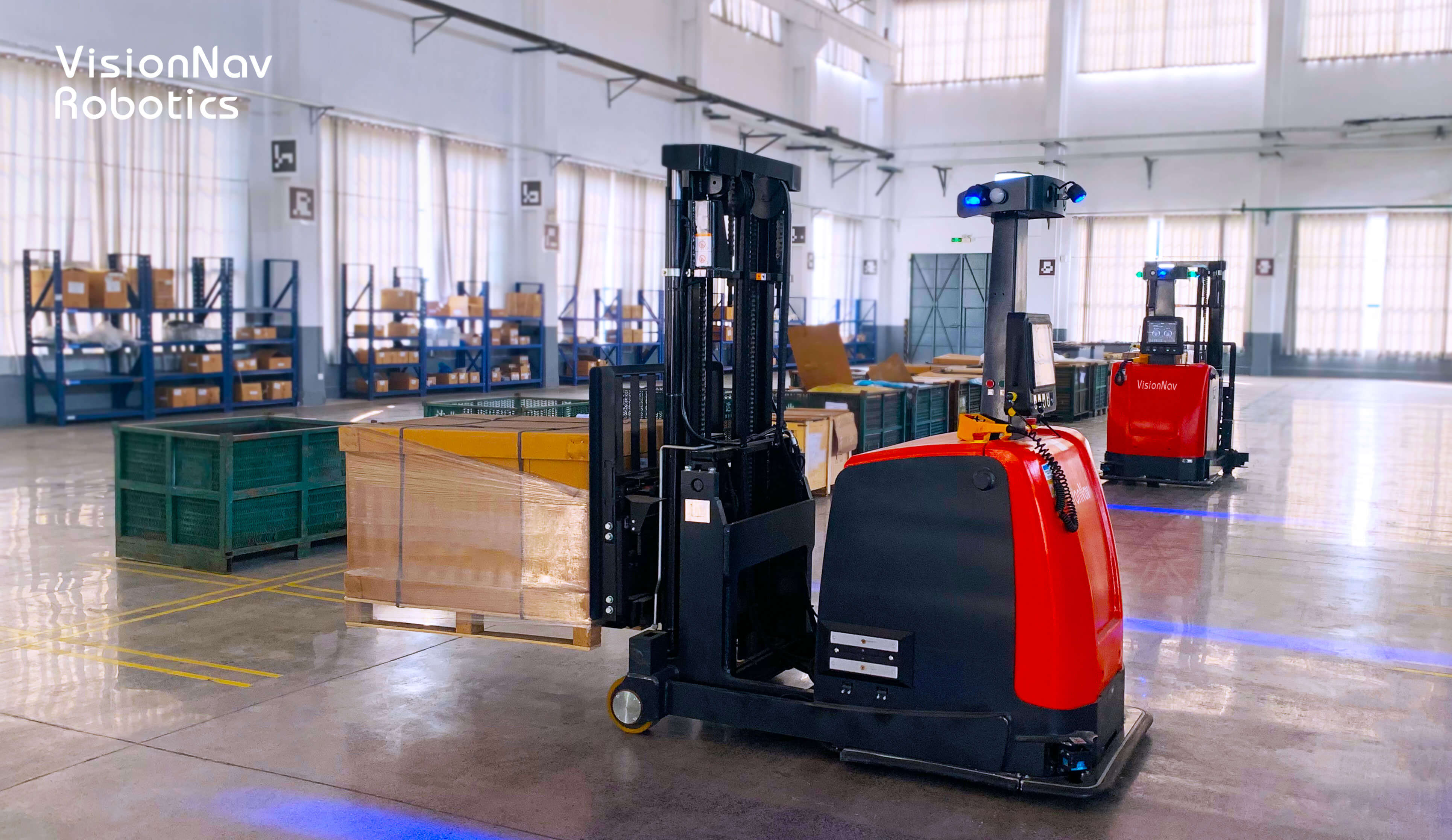
VNP20 is handling materials on site
Improve Transfer Efficiency by 30%: The key to efficient transfer with two autonomous forklifts lies in the system's path planning and scheduling capabilities. Just like running in a relay race, every runner should be capable of responding to needs promptly. The VNP20 autonomous forklift is required to maintain high stability when connecting different processes to perform material transfer operations. Thus, there will be no failures and pauses, acceleration and deceleration, or failure to store goods in the process. The overall transfer efficiency of the intralogistics workflow increased by 30% after the deployment.
VisionNav's intralogistics solution can effectively connect the logistics process to a varying degree. The autonomous transfer of materials between intervals becomes smoother with an even smarter and better intralogistics solution.
Business Contact
Media Contact
Iris
Marketing Manager